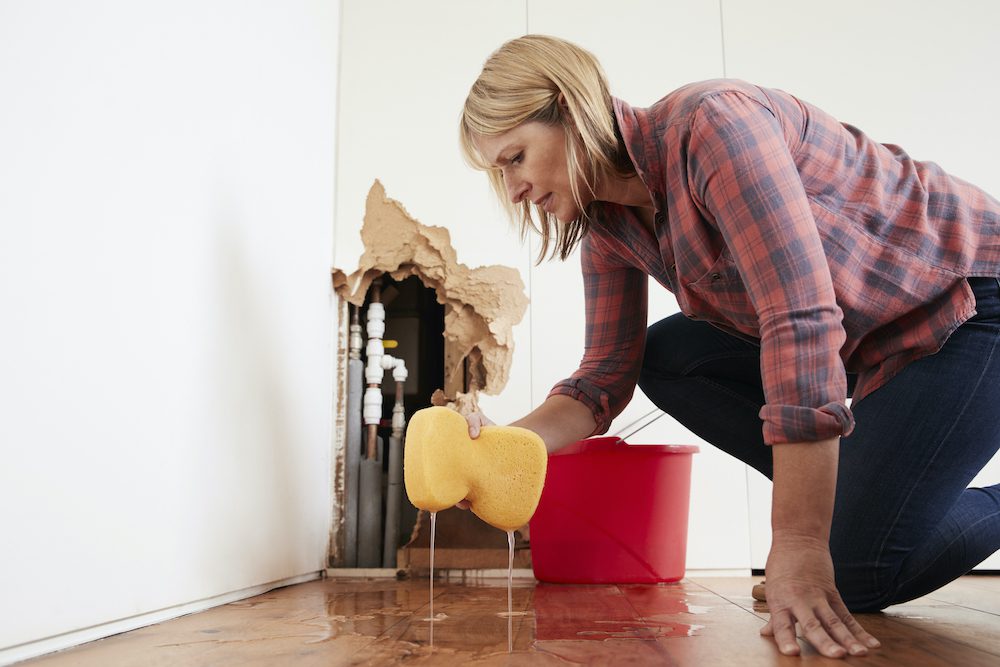Spot Hidden Water Line Leaks: Six Clever Detection Tricks
Spot Hidden Water Line Leaks: Six Clever Detection Tricks
Blog Article
The author is making a few great points on Leaking water lines overall in this great article on the next paragraphs.

Early discovery of leaking water lines can reduce a prospective catastrophe. Some tiny water leaks may not be noticeable.
1. Check Out the Water Meter
Every house has a water meter. Checking it is a surefire manner in which helps you discover leakages. For beginners, switch off all the water sources. Make sure no one will flush, utilize the tap, shower, run the cleaning maker or dish washer. From there, most likely to the meter and also watch if it will certainly change. Because nobody is utilizing it, there need to be no movements. If it relocates, that indicates a fast-moving leak. Furthermore, if you find no changes, wait a hr or two and also inspect back again. This suggests you may have a sluggish leakage that might also be below ground.
2. Check Water Usage
Analyze your water bills and track your water usage. As the one paying it, you must discover if there are any type of disparities. If you detect sudden changes, regardless of your intake coinciding, it suggests that you have leakages in your plumbing system. Keep in mind, your water bill should drop under the very same variety each month. An unexpected spike in your bill indicates a fast-moving leakage.
At the same time, a stable rise monthly, despite having the exact same practices, shows you have a sluggish leakage that's also slowly escalating. Call a plumber to completely check your residential or commercial property, particularly if you really feel a cozy location on your floor with piping beneath.
3. Do a Food Coloring Test
30% comes from bathrooms when it comes to water usage. Test to see if they are running correctly. Drop flecks of food shade in the storage tank and wait 10 mins. If the shade somehow infiltrates your bowl during that time without flushing, there's a leakage in between the tank and also bowl.
4. Asses Exterior Lines
Don't forget to examine your outside water lines too. Should water permeate out of the connection, you have a loosened rubber gasket. One small leakage can lose lots of water and spike your water costs.
5. Examine and also Evaluate the Scenario
House owners ought to make it a habit to examine under the sink counters and even inside cupboards for any type of bad odor or mold and mildew development. These 2 red flags suggest a leakage so timely interest is needed. Doing routine evaluations, even bi-annually, can save you from a major trouble.
If you recognize your house is already old, maintain a watchful eye on your heating systems, hose pipes, pipelines etc. Look for discolorations as well as compromising as the majority of home appliances and also pipes have a life span. They will likewise normally deteriorate because of tear and use. If you believe leaking water lines in your plumbing system, don't wait on it to intensify. Call a specialist plumber today so you do not end up with an awful mess in your home.
Early detection of leaking water lines can reduce a prospective catastrophe. Some tiny water leaks might not be noticeable. Checking it is a surefire way that helps you uncover leaks. One tiny leakage can waste tons of water and also surge your water bill.
If you presume leaking water lines in your plumbing system, do not wait for it to escalate.
WARNING SIGNS OF WATER LEAKAGE BEHIND THE WALL
PERSISTENT MUSTY ODORS
As water slowly drips from a leaky pipe inside the wall, flooring and sheetrock stay damp and develop an odor similar to wet cardboard. It generates a musty smell that can help you find hidden leaks.
MOLD IN UNUSUAL AREAS
Mold usually grows in wet areas like kitchens, baths and laundry rooms. If you spot the stuff on walls or baseboards in other rooms of the house, it’s a good indicator of undetected water leaks.
STAINS THAT GROW
When mold thrives around a leaky pipe, it sometimes takes hold on the inside surface of the affected wall. A growing stain on otherwise clean sheetrock is often your sign of a hidden plumbing problem.
PEELING OR BUBBLING WALLPAPER / PAINT
This clue is easy to miss in rooms that don’t get much use. When you see wallpaper separating along seams or paint bubbling or flaking off the wall, blame sheetrock that stays wet because of an undetected leak.
BUCKLED CEILINGS AND STAINED FLOORS
If ceilings or floors in bathrooms, kitchens or laundry areas develop structural problems, don’t rule out constant damp inside the walls. Wet sheetrock can affect adjacent framing, flooring and ceilings.
https://www.servicemasterbyzaba.com/blog/how-to-detect-water-leakage-in-walls/

We had been made aware of that editorial on Finding hidden leaks through someone on our other web page. Do you know somebody else who is intrigued by the subject? Why not share it. I love reading our article about Detecting hidden plumbing leaks.
Call us now! Report this page